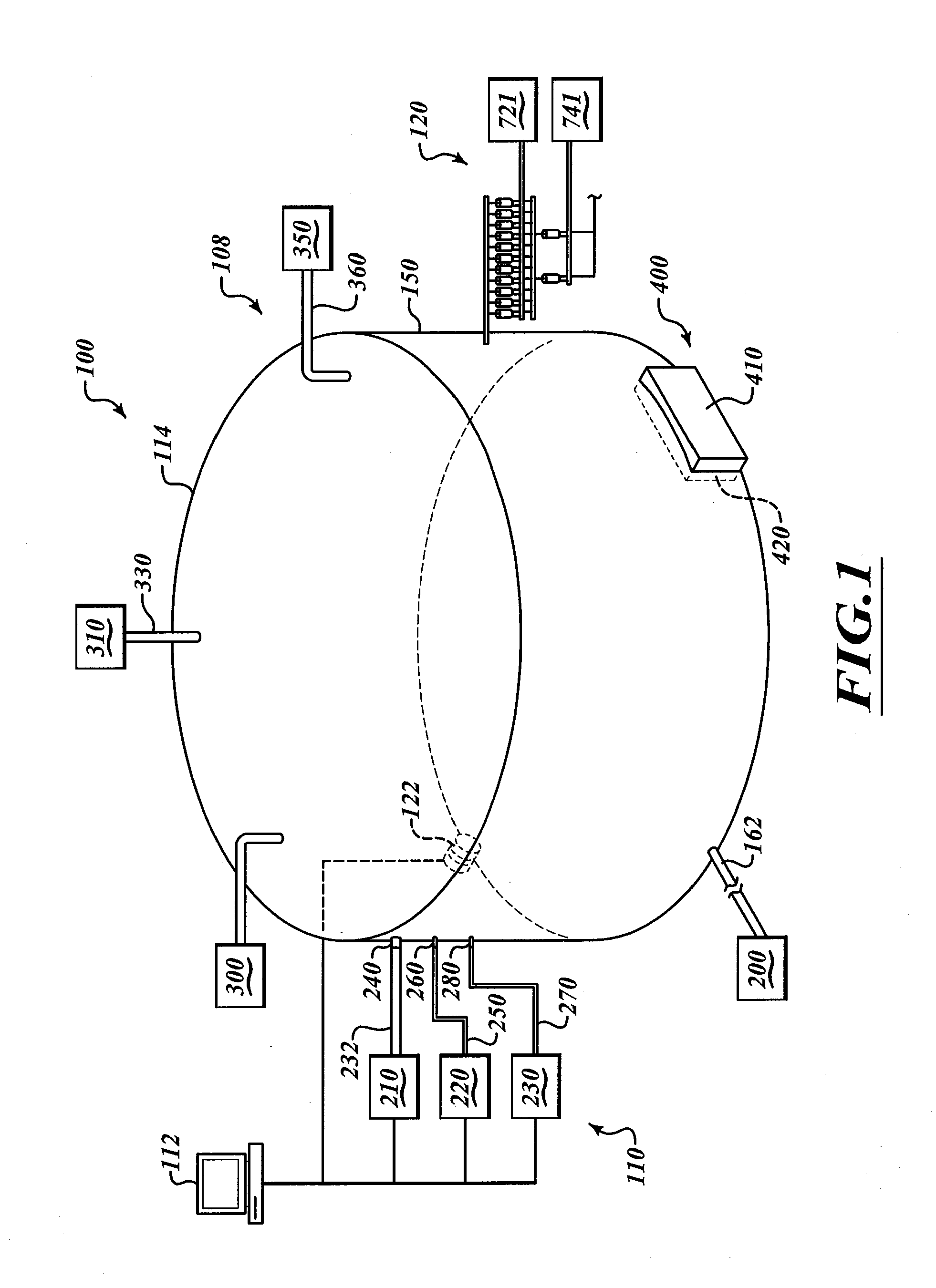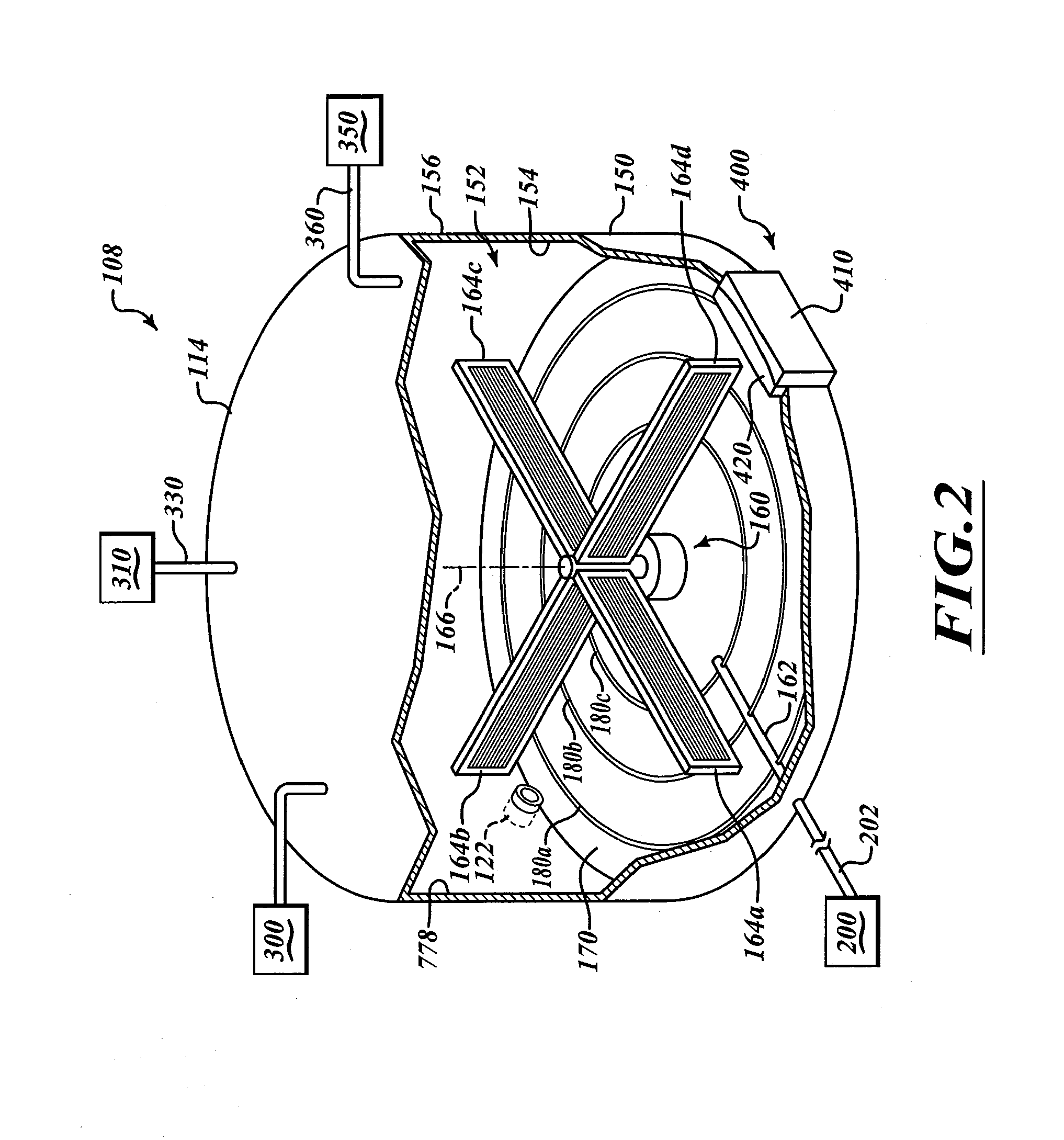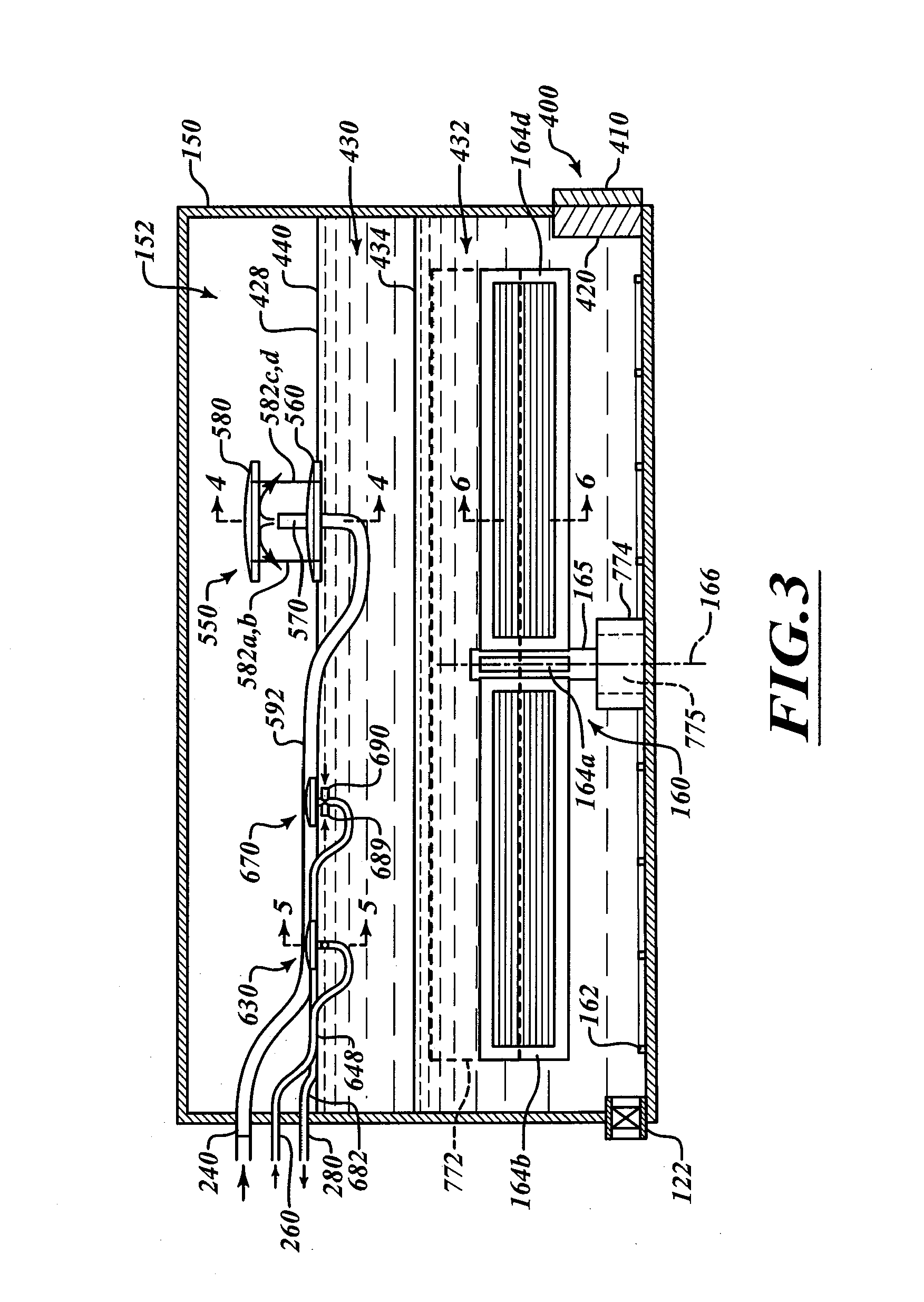Method and system for processing a biomass for producing biofuels and other products
a biomass and biofuel technology, applied in the field of biomass processing, can solve the problems of not being a finite fuel source, reducing the greenhouse effect, and continuing the global energy crisis, and achieve the effects of high production costs, efficient and cost-effectively, efficient and cost-effectiv
- Summary
- Abstract
- Description
- Claims
- Application Information
AI Technical Summary
Benefits of technology
Problems solved by technology
Method used
Image
Examples
example 1
Generation of a Biomass
[0211]This example describes one exemplary method of generating a biomass.
[0212]In order to generate a biomass, the fungus Aspergillus fumigatus was utilized as the microorganism, and well-chopped rice straw, a lignocellulosic material, was provided as the biodegradable substrate. 10 g of rice straw was placed in each of 10 flasks. The rice straw was washed and dried in the flask, and the weight of the clean, dry straw was recorded (see Table 1). The percentage of weight lost by the rice straw due to washing and drying was calculated. Once the dry weight of the clean straw was recorded, 200 ml of water was added to each flask.
[0213]Glycerol (0.1 ml / flask) and urea (0.01 g / flask) were added to the rice straw as nutritional supplements. Glycerol was chosen as a supplement, because it is a byproduct of biodiesel production, and using glycerol as a supplement is one way to recycle this abundant, inexpensive, and readily available byproduct. Urea, a common componen...
example 2
Autolysis Induction
[0217]This example describes one exemplary method of inducing autolysis of a biomass.
[0218]In order to induce autolysis of the A. fumigatus biomass, the mycelia biomass generated in Example 1 were first collected for chopping and grinding to increase the exposed surface area. After being chopped, the biomass was returned to the liquid media, and 0.2 to 0.4 g of a chlorine dioxide tablet was dissolved in the media. The biomass was exposed to the chlorine dioxide for 5 to 15 minutes to induce autolysis. Following the exposure time, the flask was agitated for about 5 to 10 minutes to let the air penetrate into the solution and decompose the chlorine dioxide. Next, the flask was incubated in UV light for about 5 minutes to decompose any remaining chlorine dioxide and sterilize the flask. Hydrogen peroxide (1.5 ml of 30% H2O2 / liter of media) was then added to inhibit glucose oxidase, bleach any dyes in the biomass, and kill any surviving microorganisms. After a 1 hour ...
example 3
Characterization of Fatty Acids and Other Products in Autolysate
[0219]This example demonstrates the production of fatty acids and other useful products using two different fungal strains according to methods of the present invention.
[0220]Briefly, 30 flasks were washed and sterilized. Culture media was prepared containing 0.5 ml of glycerol, 0.05 grams of urea, and 0.1 grams of chlorine dioxide dissolved in 1000 ml of water. 200 ml of culture media was distributed to each flask. 5 grams of well-chopped rice straw was added to each flask, where it soaked in the culture media for 10 minutes. The flasks were then agitated for 5 minutes, following which the flasks were placed under UV lamps for 10 minutes. The flasks were then inoculated with spores; 15 flasks were inoculated with Aspergillus fumigatus spores, and 15 flasks were inoculated with Trichoderma viride spores. All flasks were incubated for 6 days at 29±1° C.
[0221]Following incubation, fresh mycelia were collected and weighed....
PUM
| Property | Measurement | Unit |
|---|---|---|
| temperature | aaaaa | aaaaa |
| temperature | aaaaa | aaaaa |
| body weight | aaaaa | aaaaa |
Abstract
Description
Claims
Application Information
 Login to View More
Login to View More - R&D
- Intellectual Property
- Life Sciences
- Materials
- Tech Scout
- Unparalleled Data Quality
- Higher Quality Content
- 60% Fewer Hallucinations
Browse by: Latest US Patents, China's latest patents, Technical Efficacy Thesaurus, Application Domain, Technology Topic, Popular Technical Reports.
© 2025 PatSnap. All rights reserved.Legal|Privacy policy|Modern Slavery Act Transparency Statement|Sitemap|About US| Contact US: help@patsnap.com



